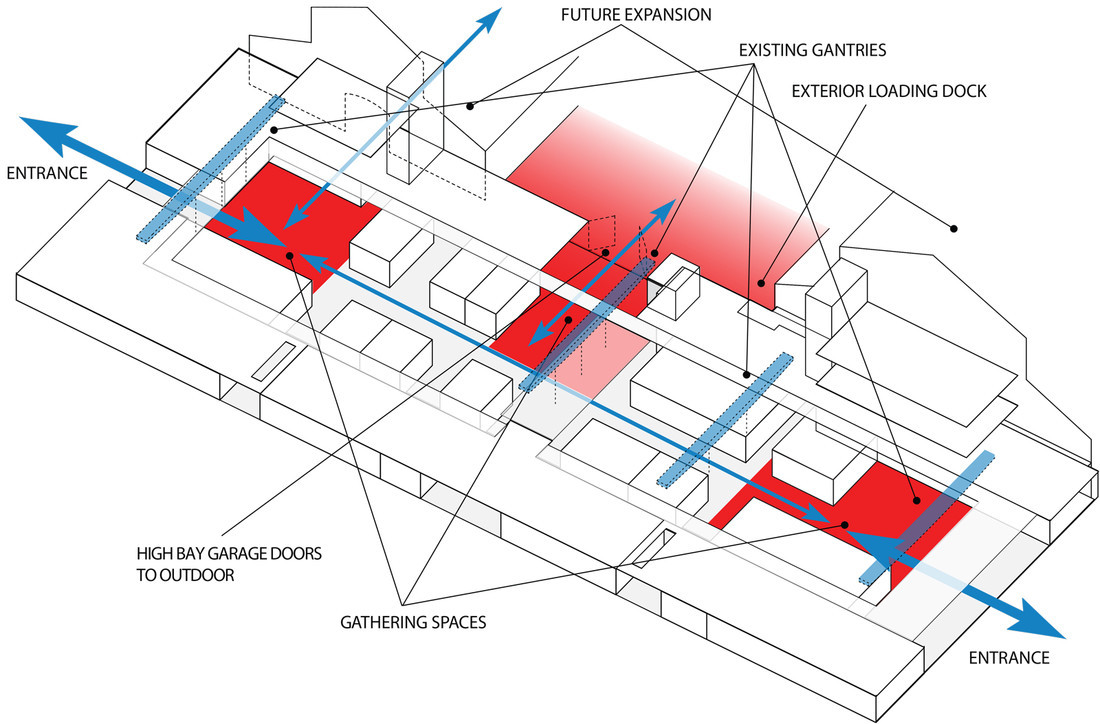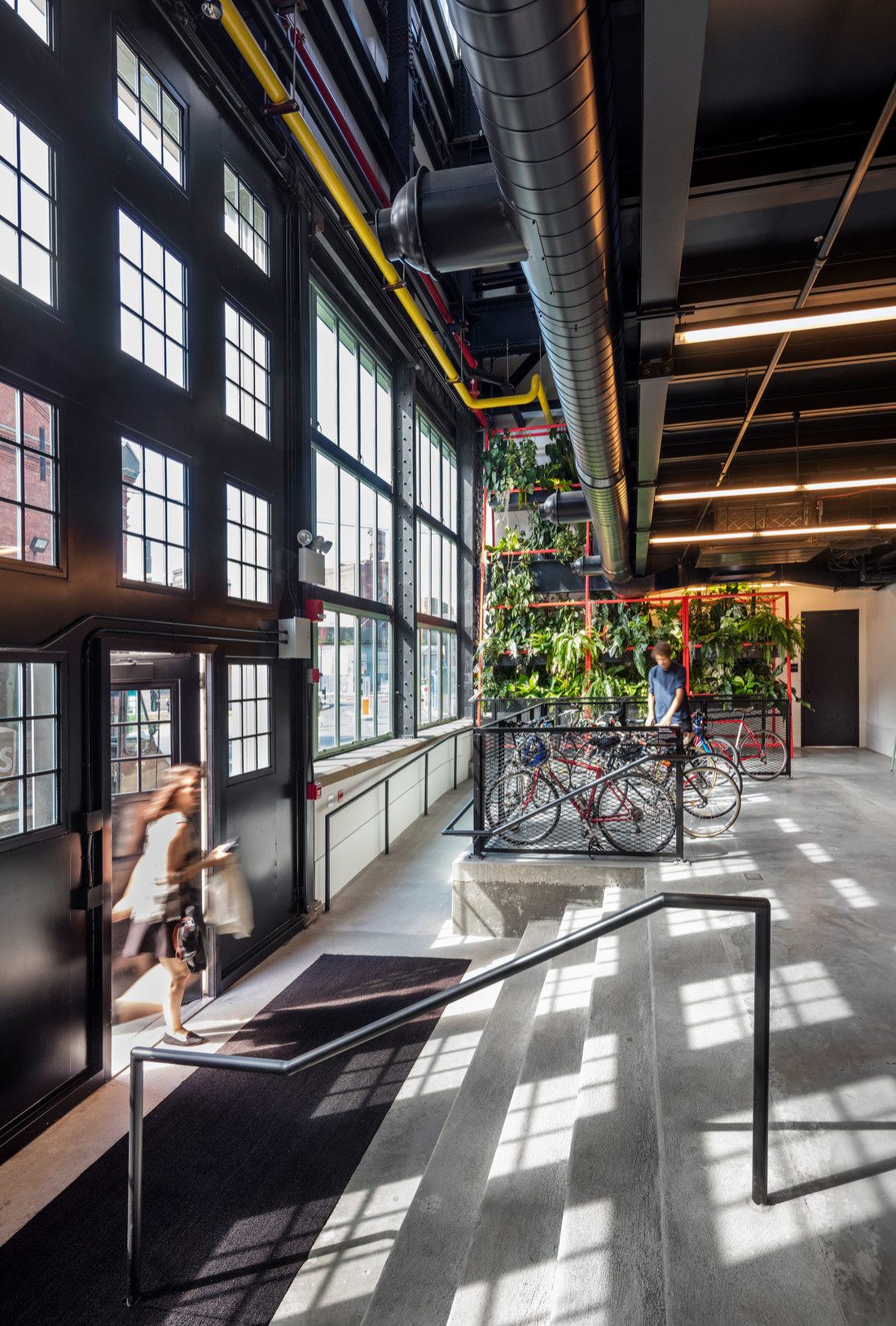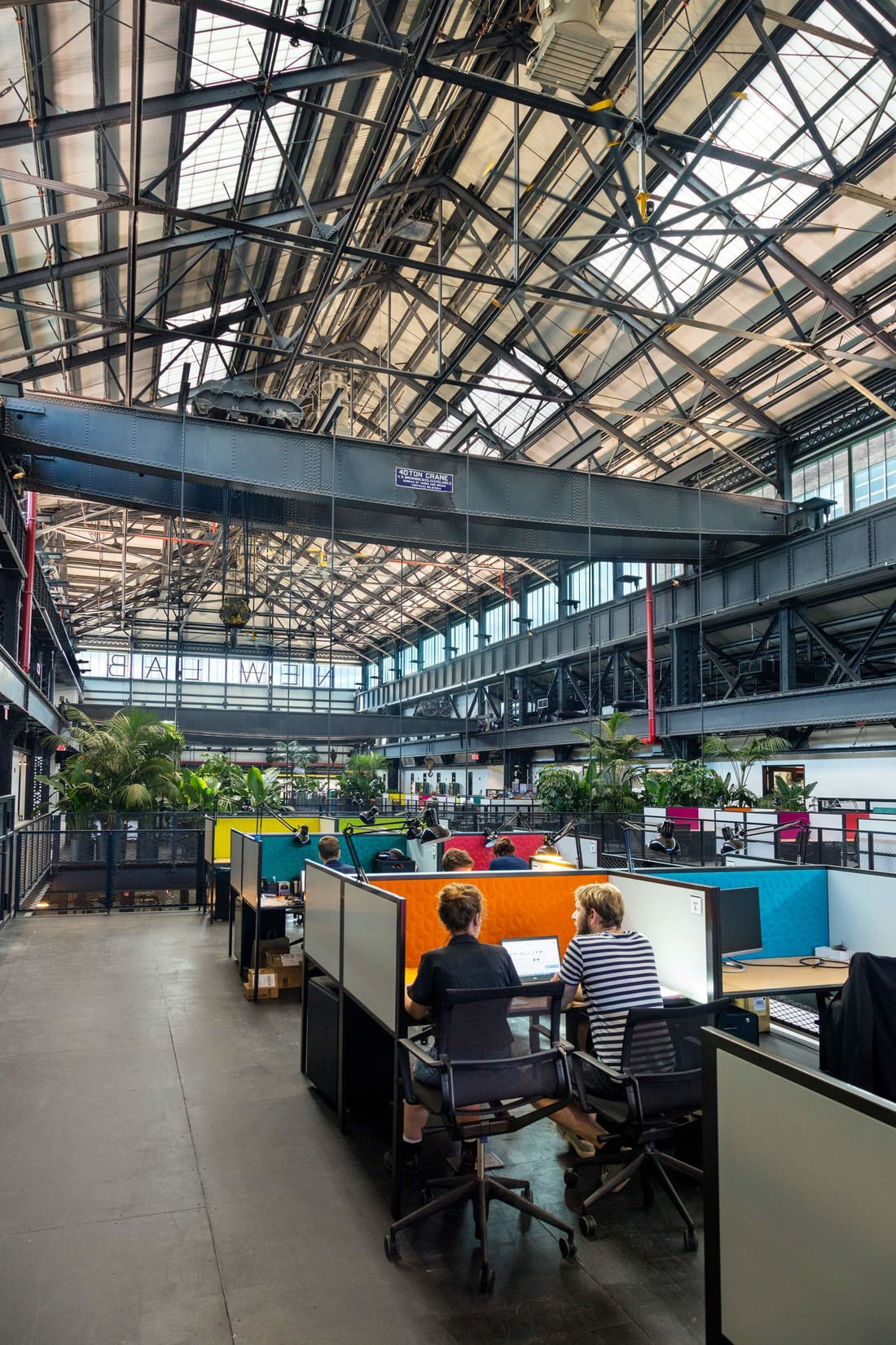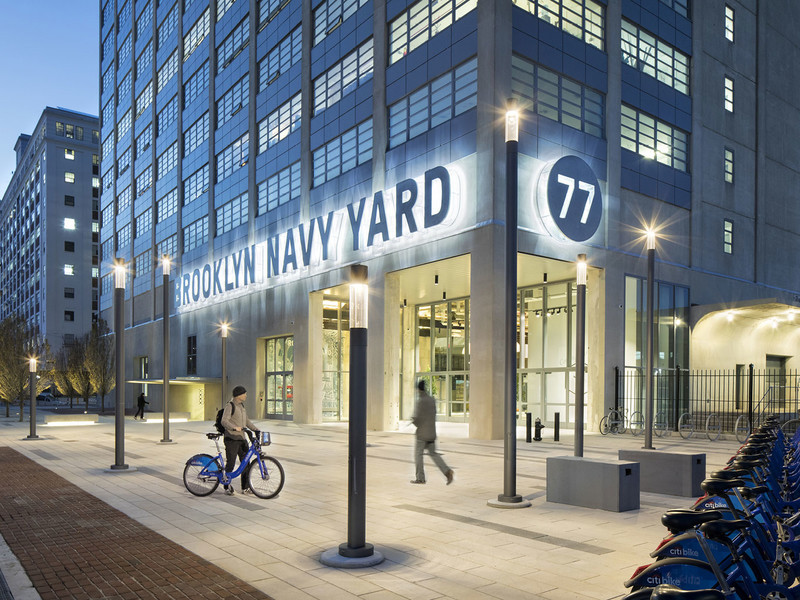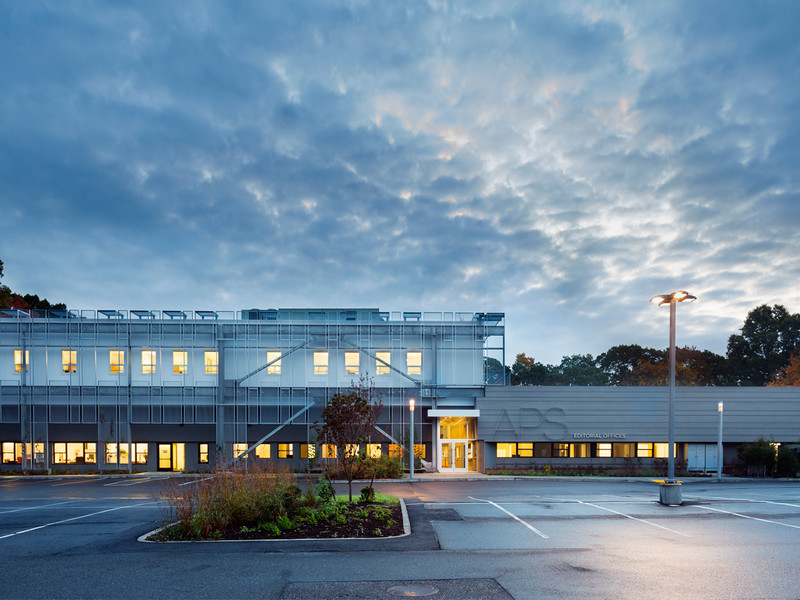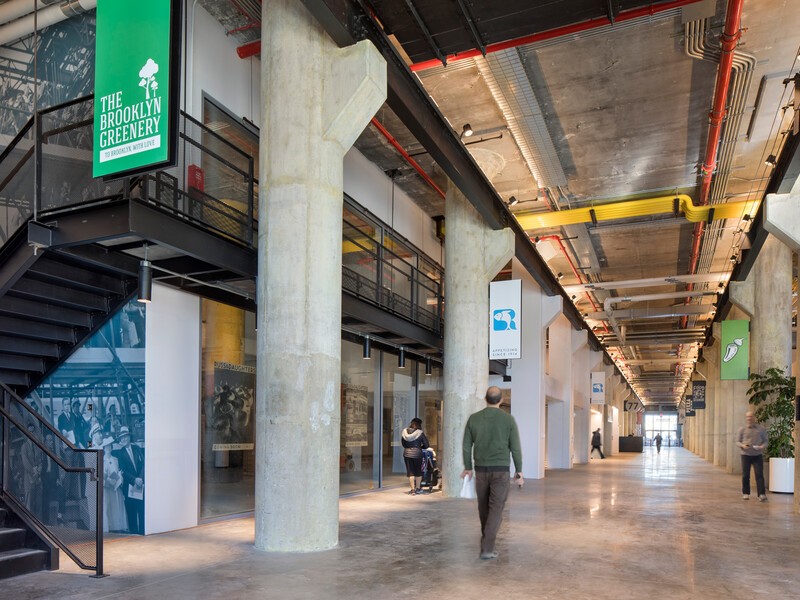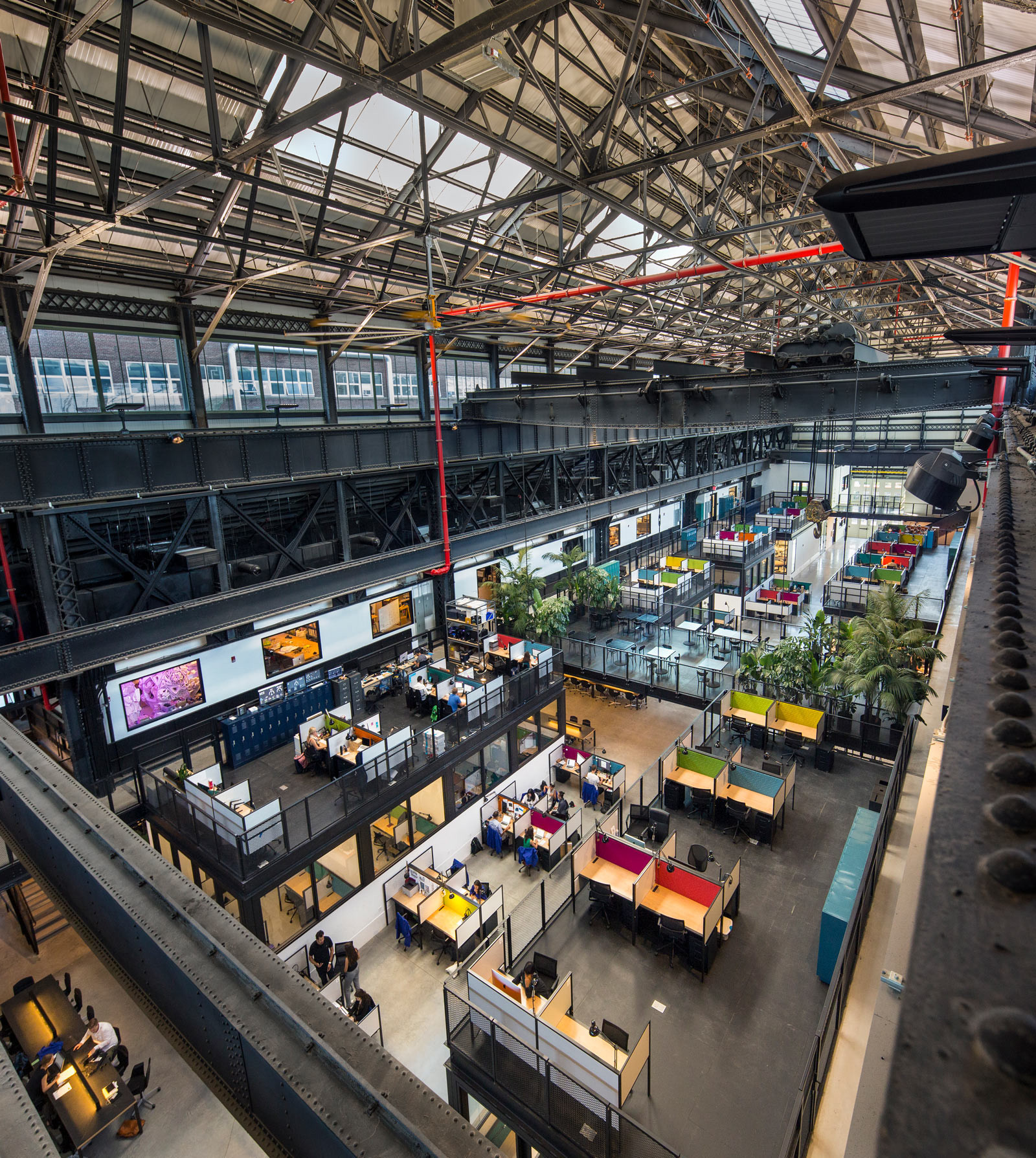
New Lab
New Lab is a platform for scaling frontier technologies to champion the world’s most forward-thinking entrepreneurs and partners with corporate and city stakeholders to catalyze innovation.
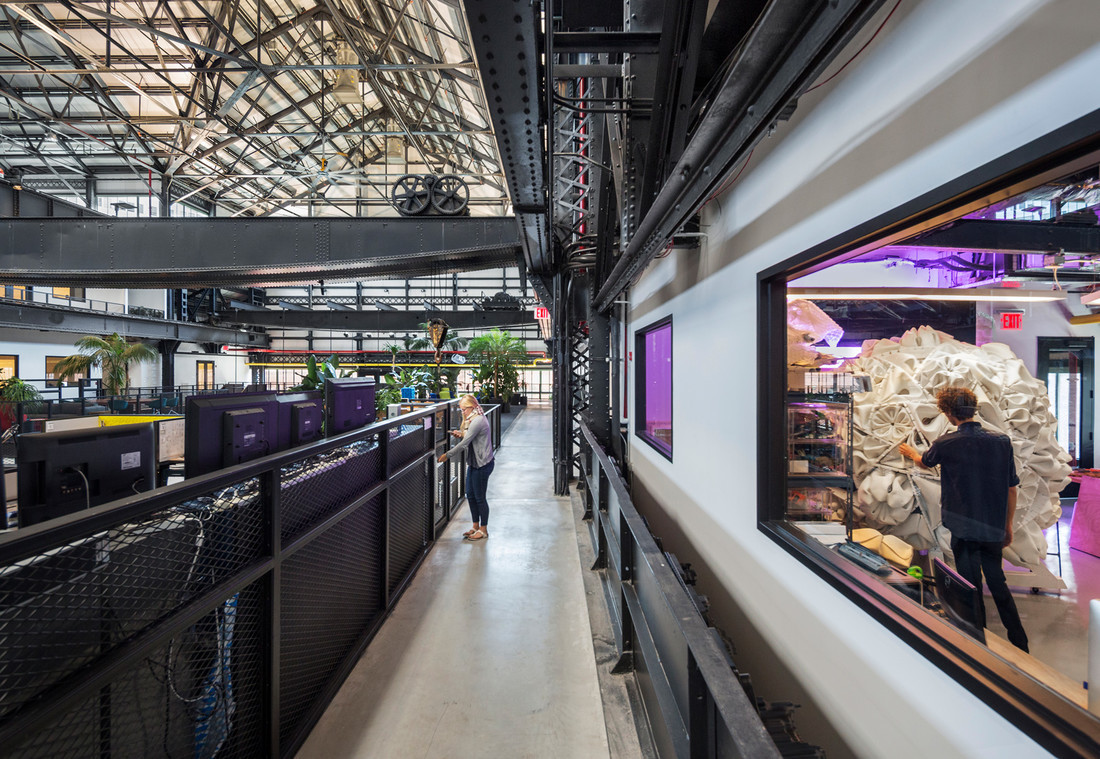
New Lab serves a community of over 600
entrepreneurs representing more than 100 member companies working in frontier technologies including robotics, artificial intelligence, connected devices, and life sciences. ©David Sundberg/ESTO
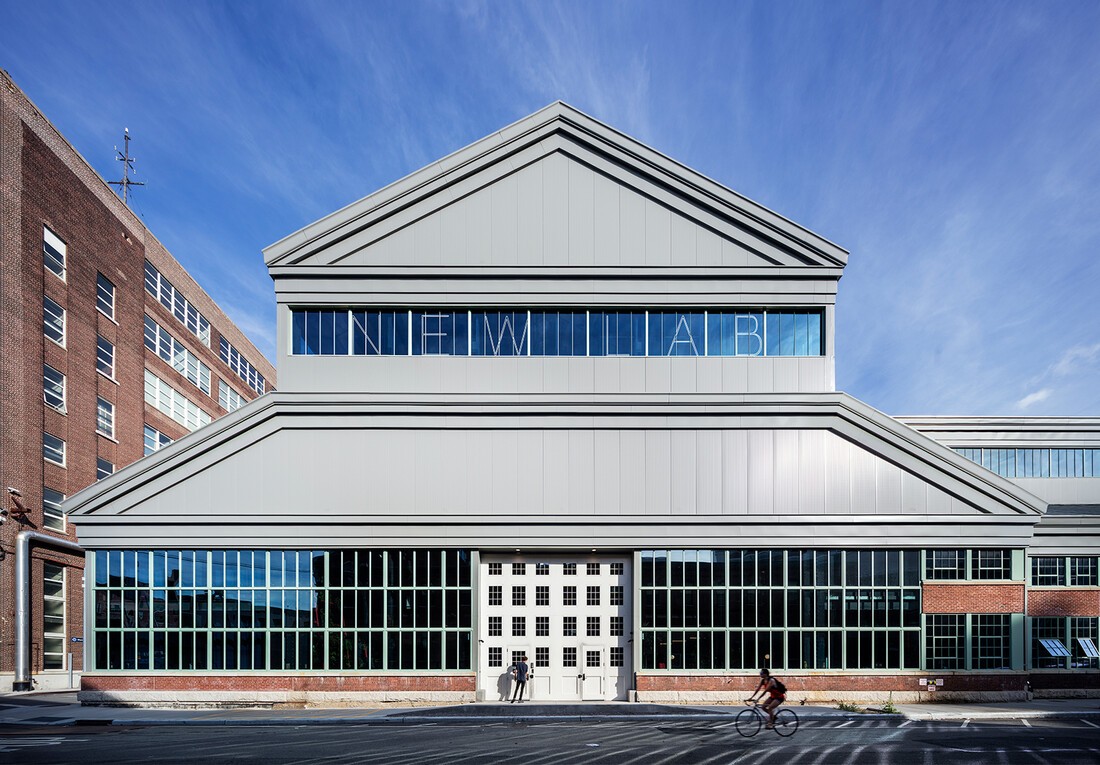
Restored envelope. Replacement insulated metal cladding and windows match historic configurations and profiles. ©David Sundberg/ESTO
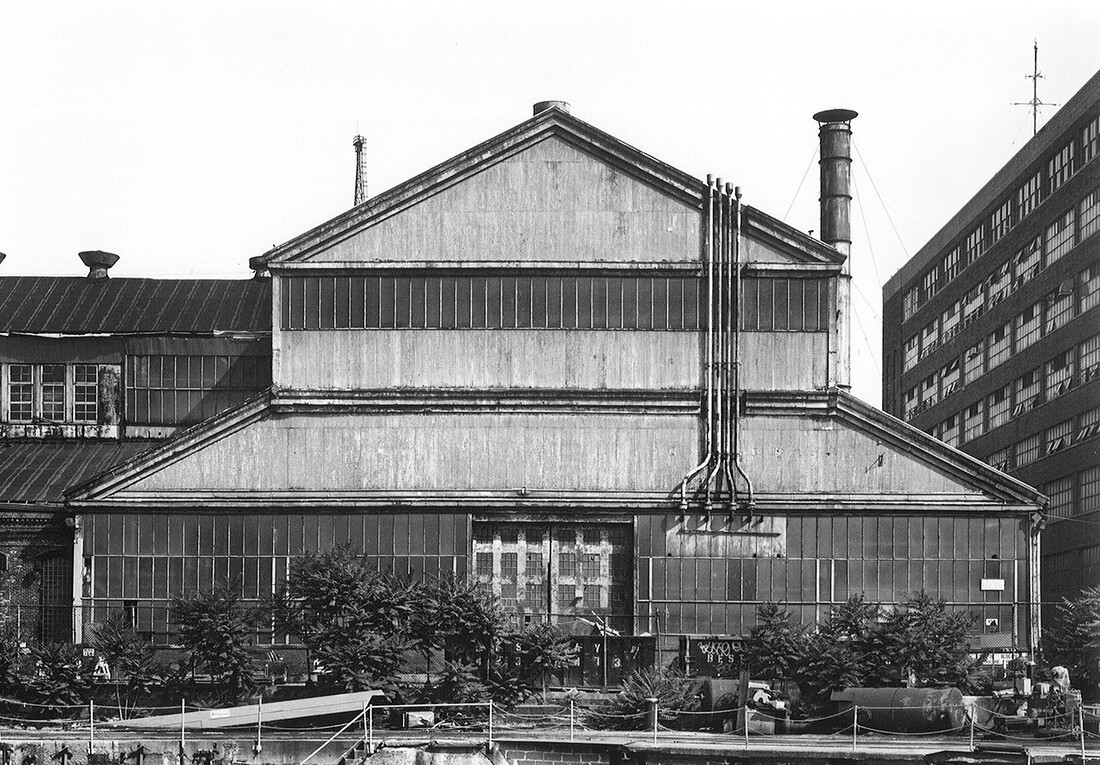
Exterior façade of Building 128 and the
New Lab, prior to restoration. Initially constructed by the US Navy in 1899 as a machine shop for producing marine engines and components, the site was frequently modified, reconfigured, and expanded until the Navy abandoned the building and site in 1966.
Photo ©John Bartelstone
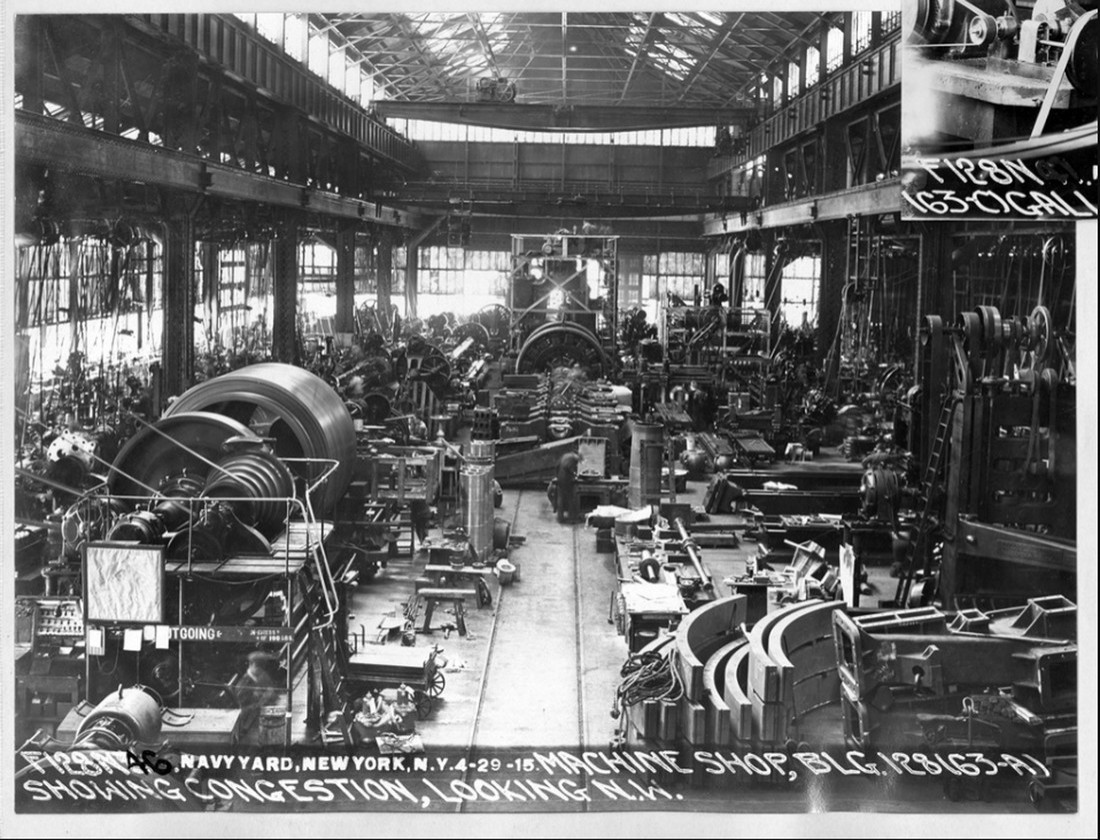
Active use as a naval machine shop, 1915.
For the build-out of the New Lab carried out by Marvel Architects, both the building’s architectural attributes and the legacy of fabrication are taken into account. Photo courtesy of the Brooklyn Navy Yard Archive.
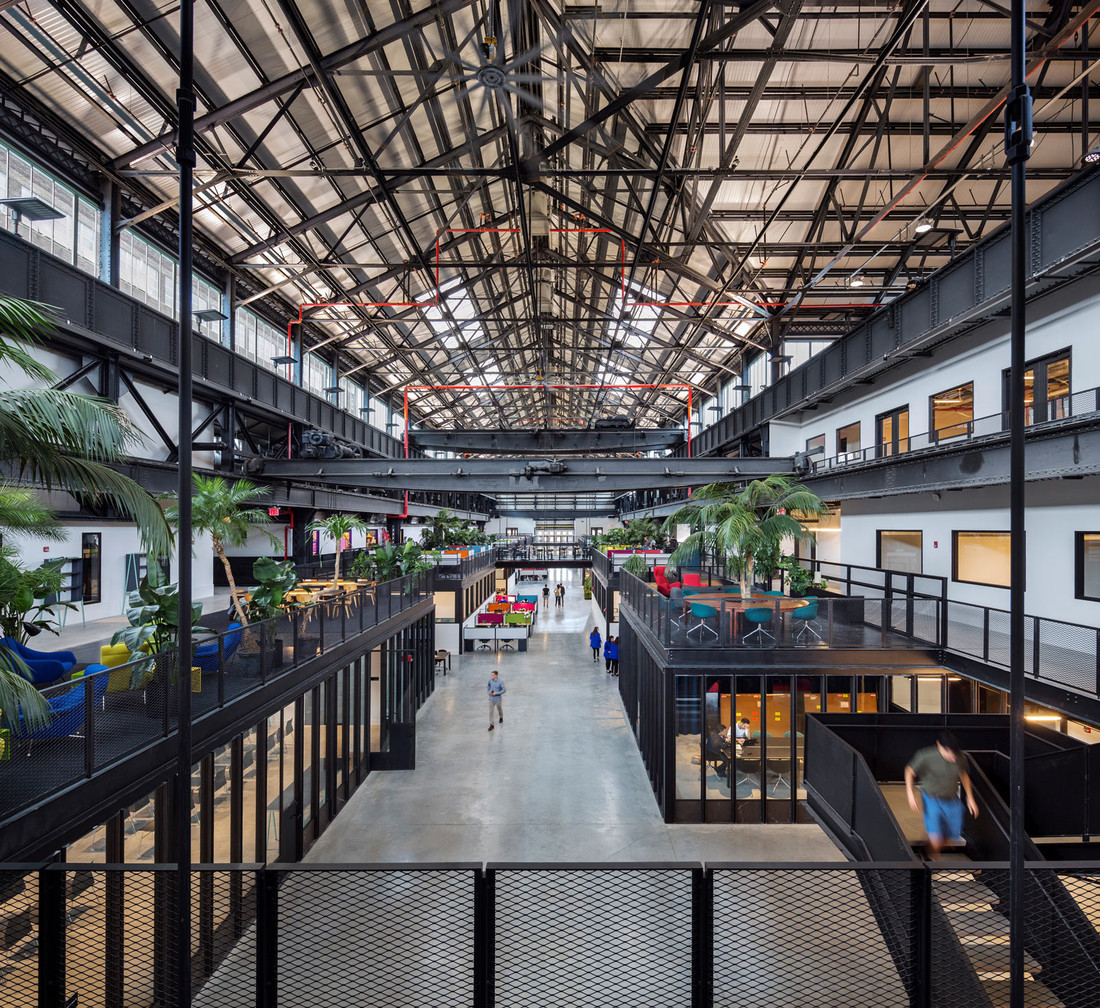
Single story build-outs mimic the stacks of raw materials and fabrication stations that once lined the naval machine shop, framing a central corridor and the industrial doors at both ends of 350 foot long building. ©David Sundberg/ESTO
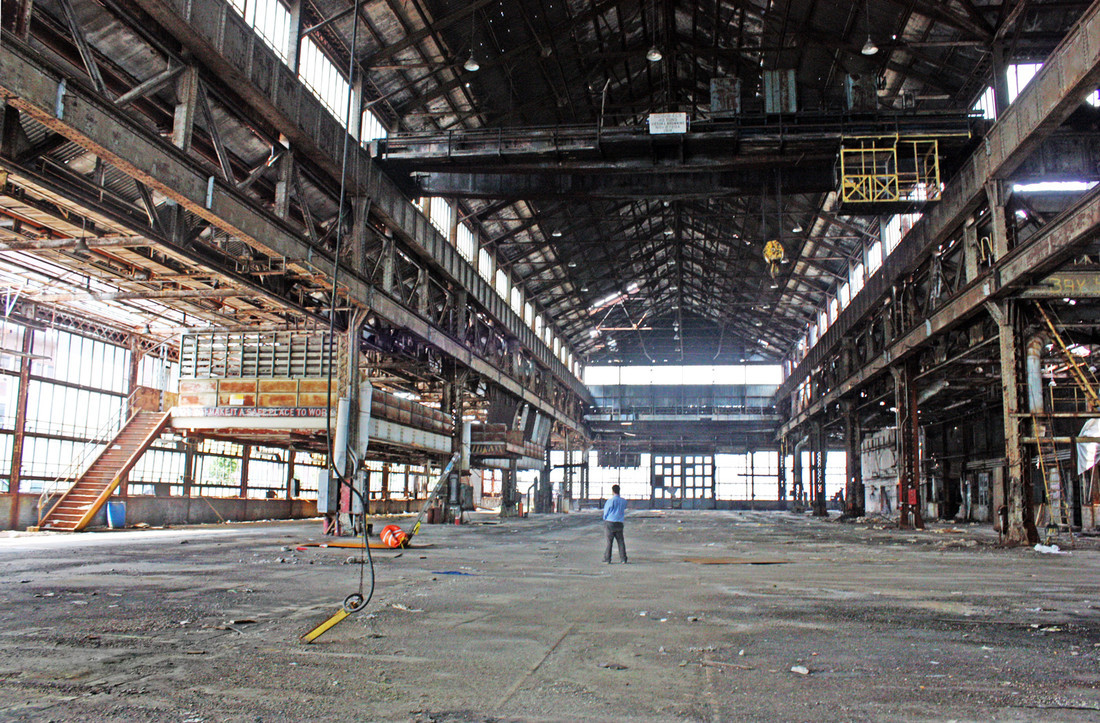
The exterior corrugated steel envelope and steel industrial windows were severely deteriorated after decades of limited use. The existing interior is a single level slab with a single 4,000 square foot elevated mezzanine.
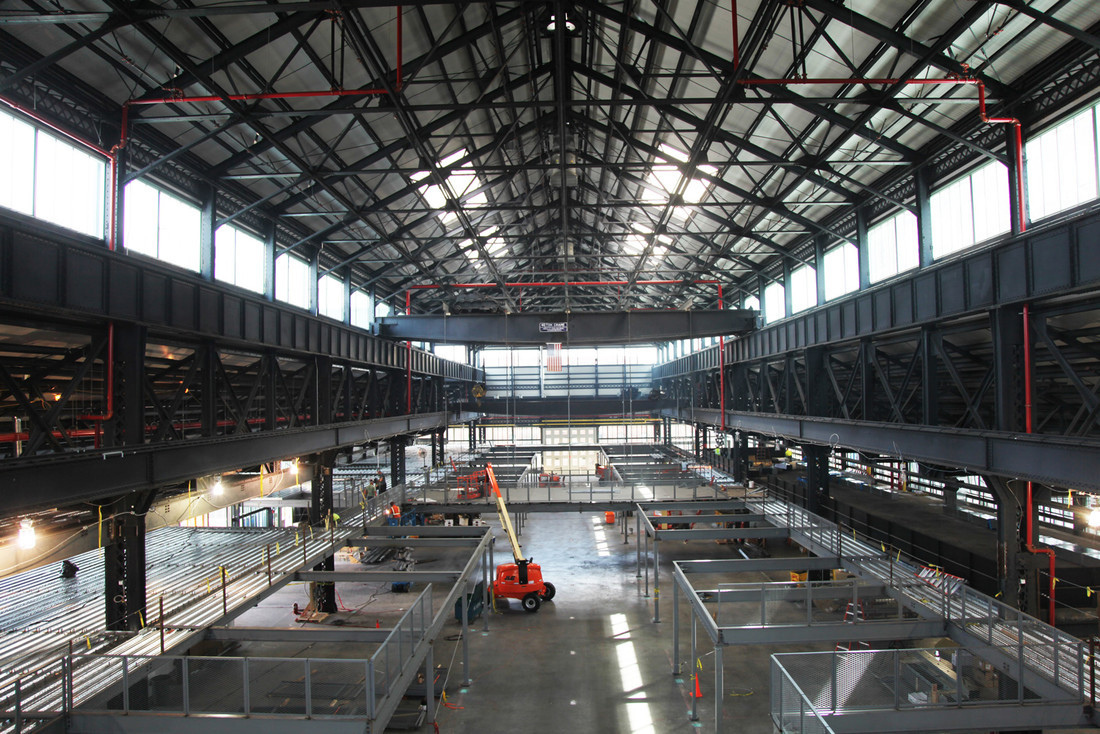
Construction
The new second floor area greatly expanded the existing mezzanine, with upper mezzanines built into the overhead roof structure. 32,000 square feet of new floor area was constructed.
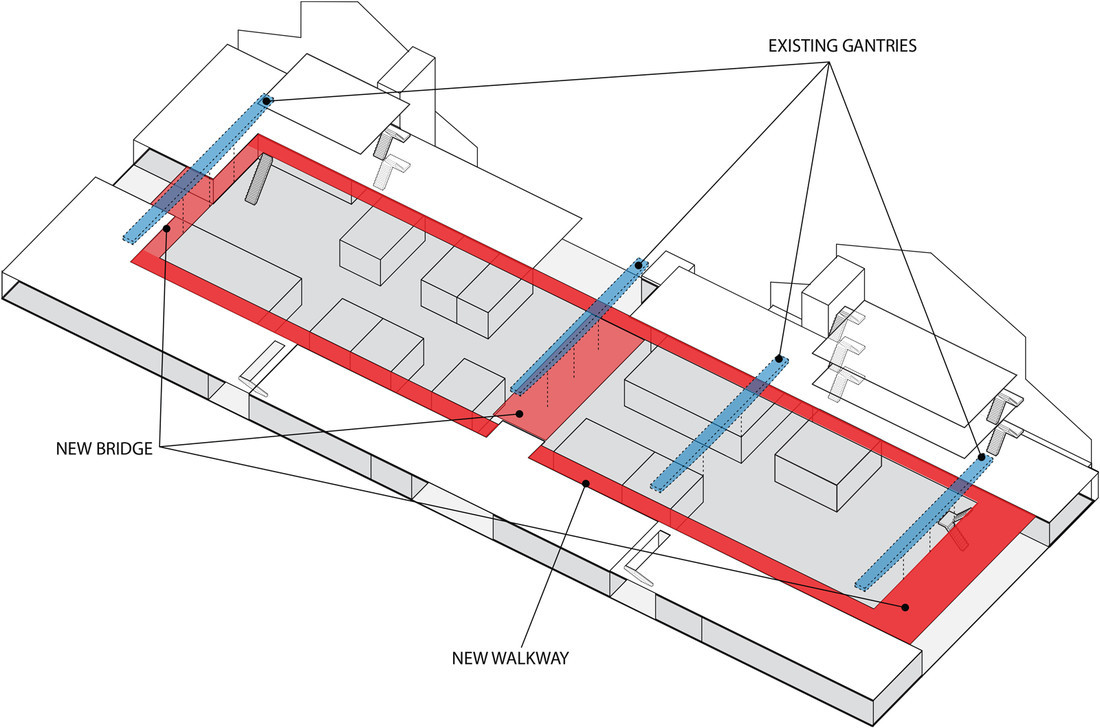
Circulation
The new upper walkway’s route and overlooks were intentional, as a means to orient and introduce visitors to the New Lab. Crossover bridges are suspended from the industrial gantries.
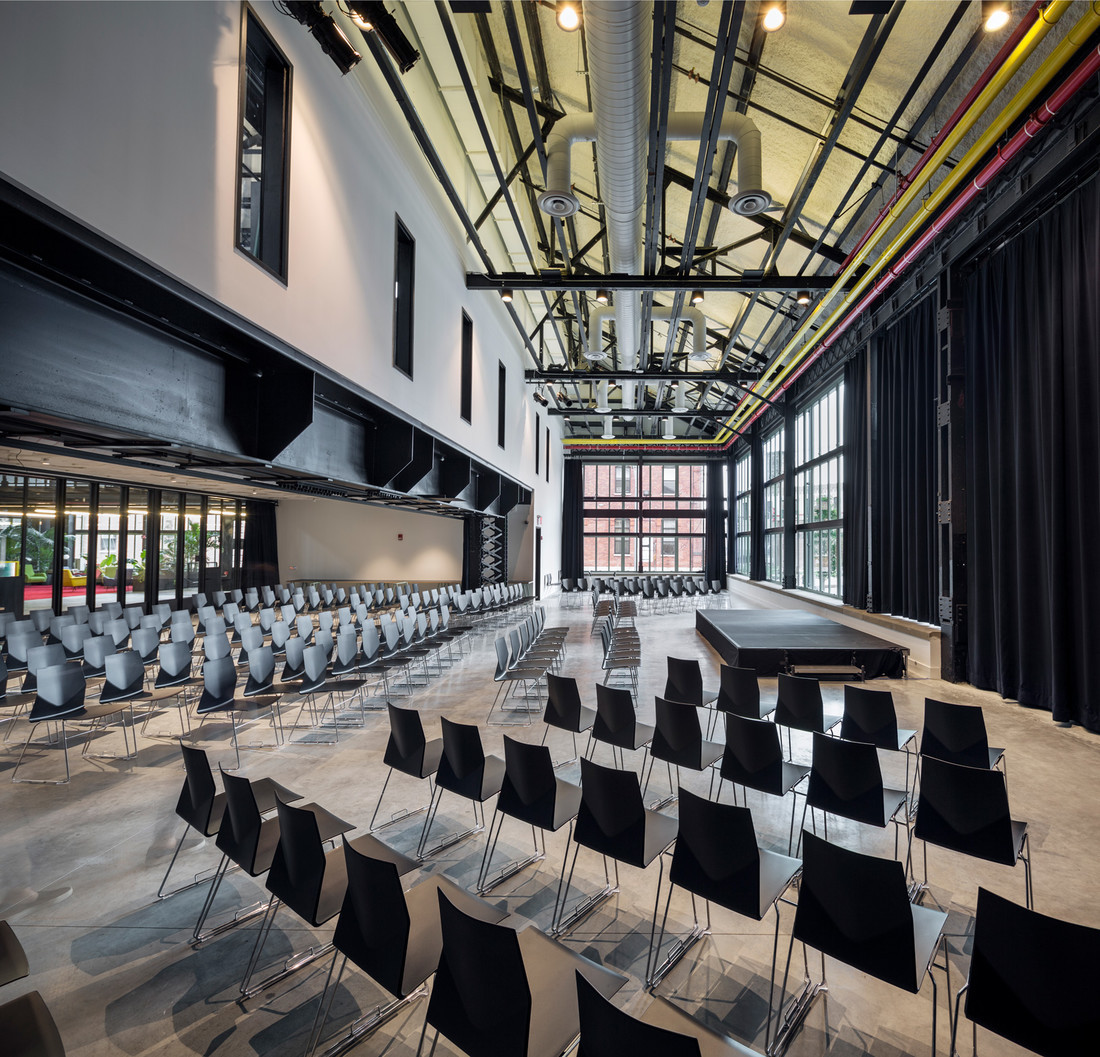
Event Space
Placed on an outside corner of the building, the event space is visible from the main entrance to the Brooklyn Navy Yard and connects to the building’s interior central corridor. ©David Sundberg/ESTO
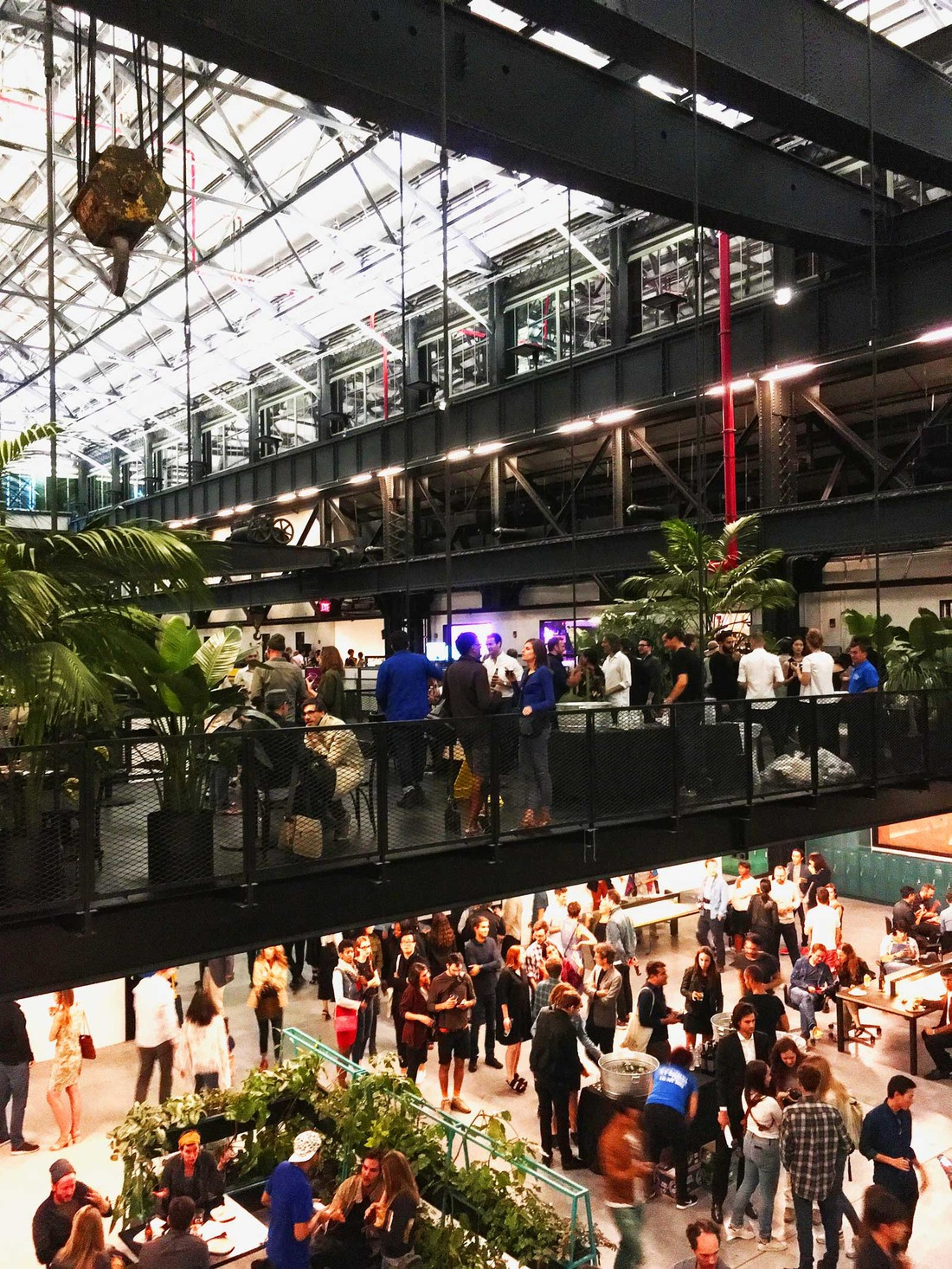
Flexibility of Use
Open areas at the main floor create opportunities for exhibits, project fabrication and events with connections inside and outside the building. Bridges carried by the original gantries create overlooks to open areas and access across the building.
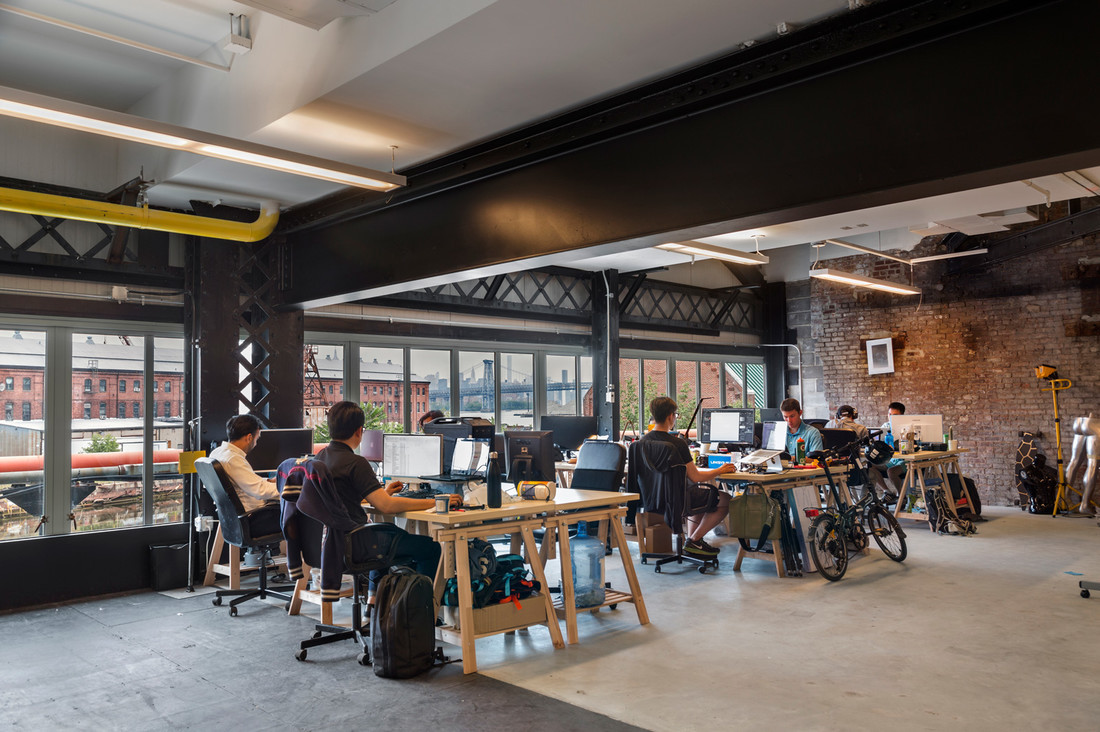
All individual tenants spaces at the outer perimeter of the building have daylighting and operable windows. ©David Sundberg/ESTO
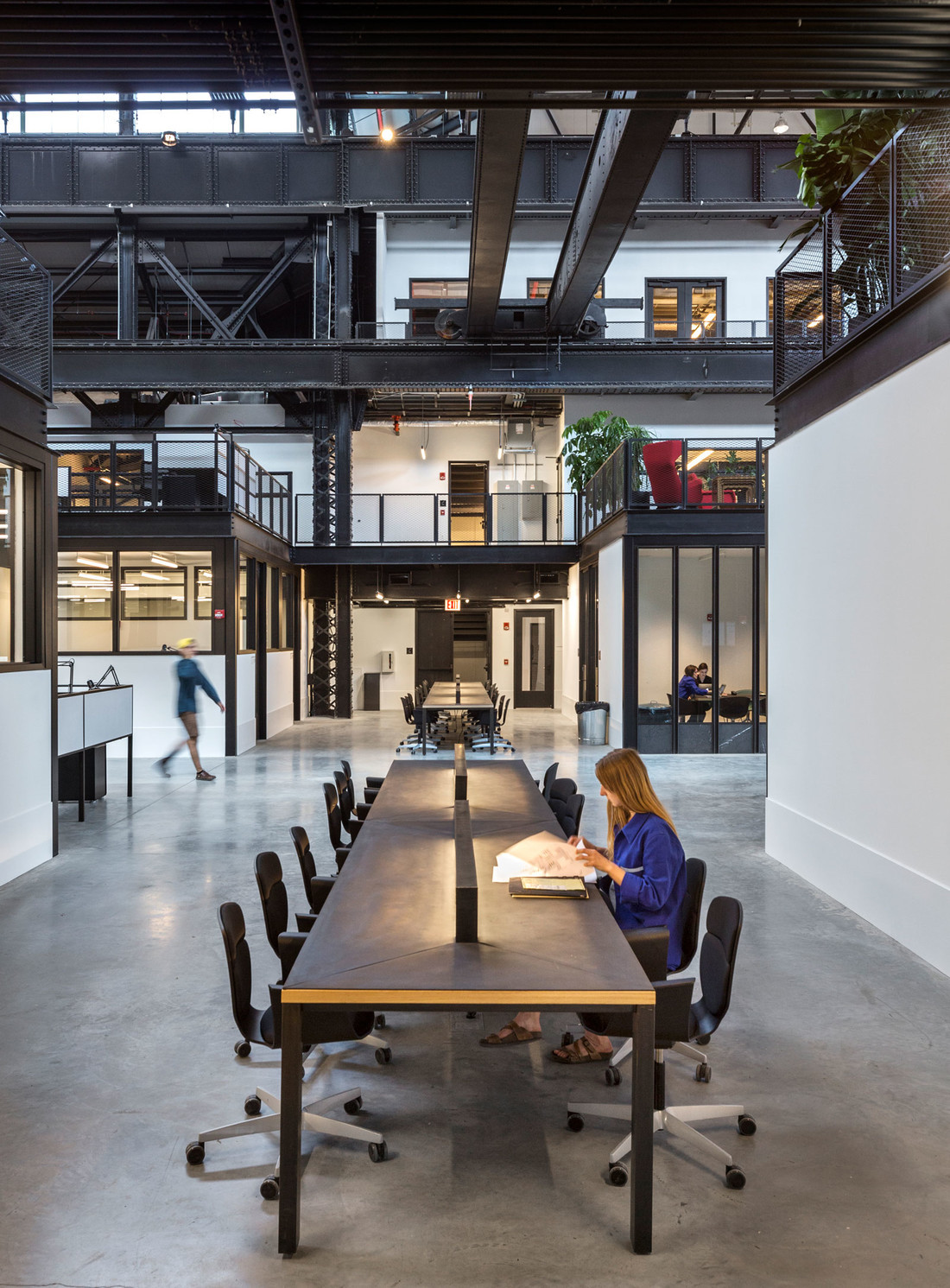
A variety of open and enclosed workspaces and meeting areas are integrated throughout the interior.
©David Sundberg/ESTO
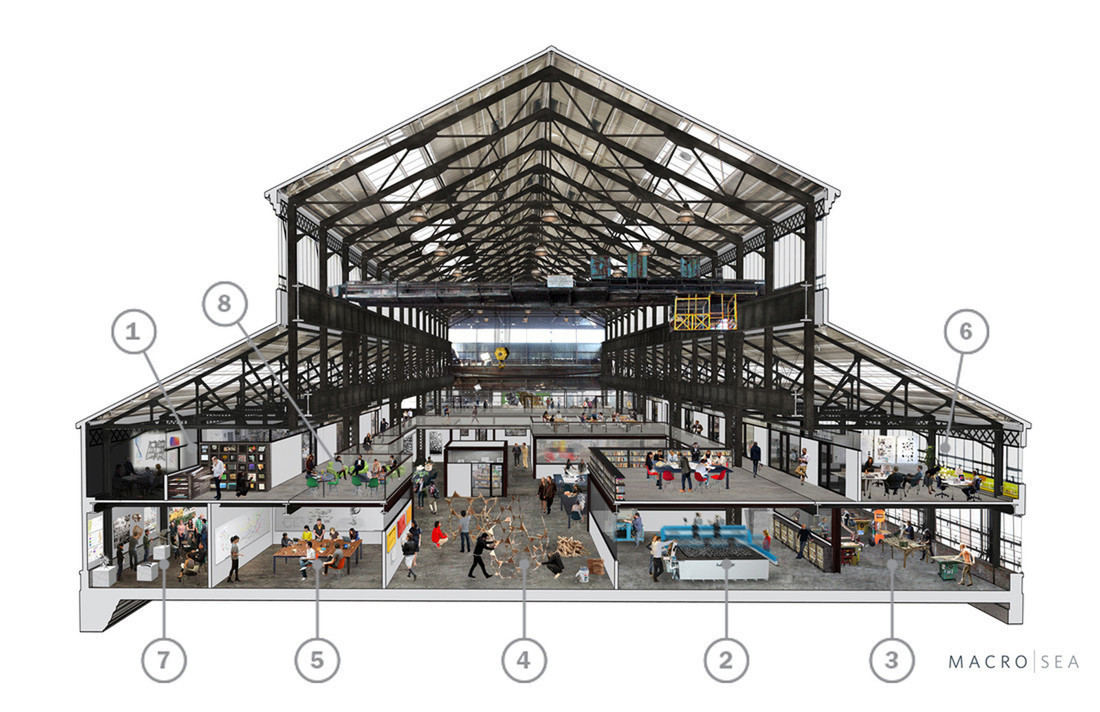
Rendered Section ©Macro Sea
1. Design Library
2. Enclosed Studio
3. Fabrication Lab
4. Project and Event Space
5. Conference Room
6. Institutional Studio
7. Enclosed Studio
8. Open Studio
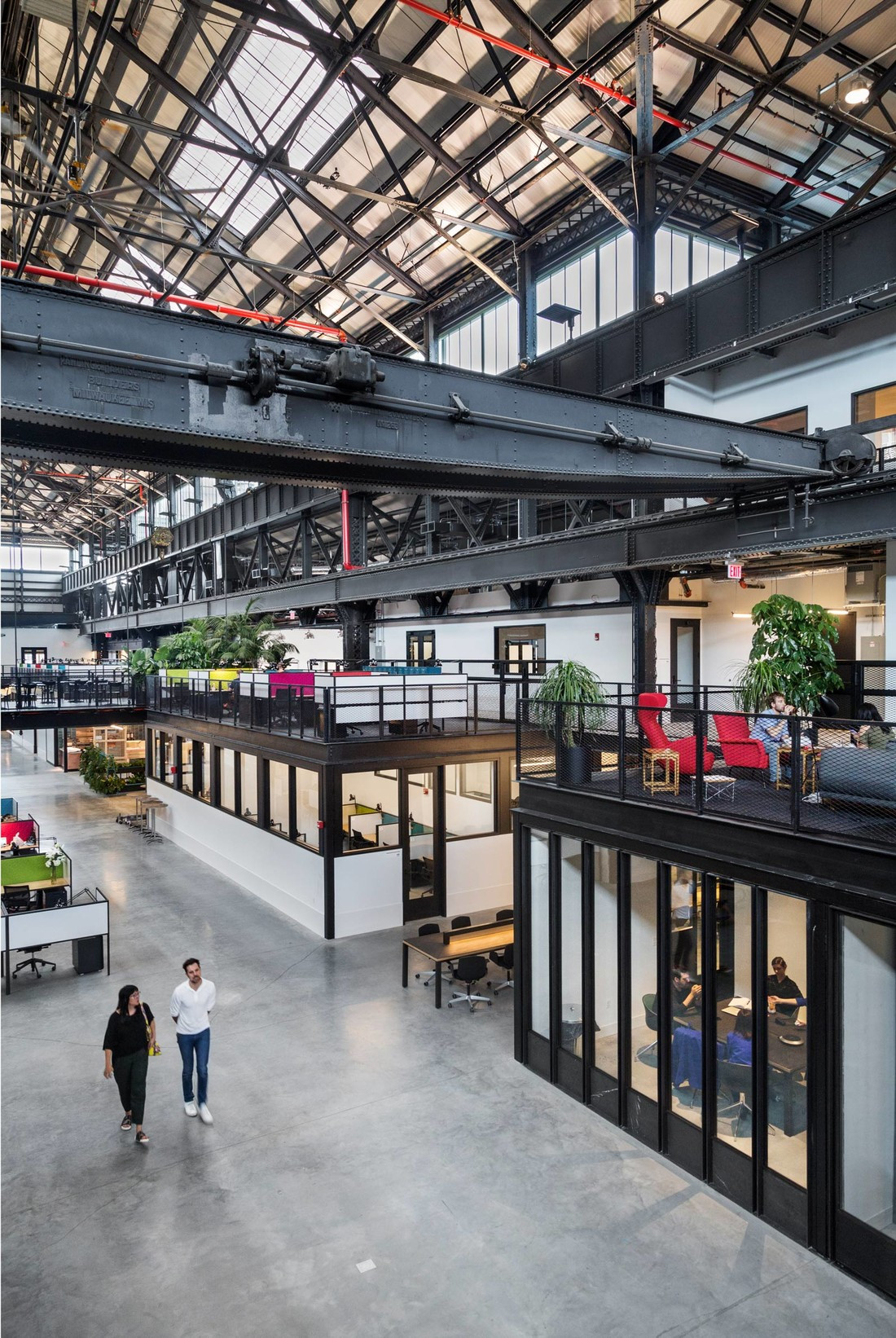
Central Corridors
A linear central corridor extends between the original sliding industrial doors at each end of the building. ©David Sundberg/ESTO
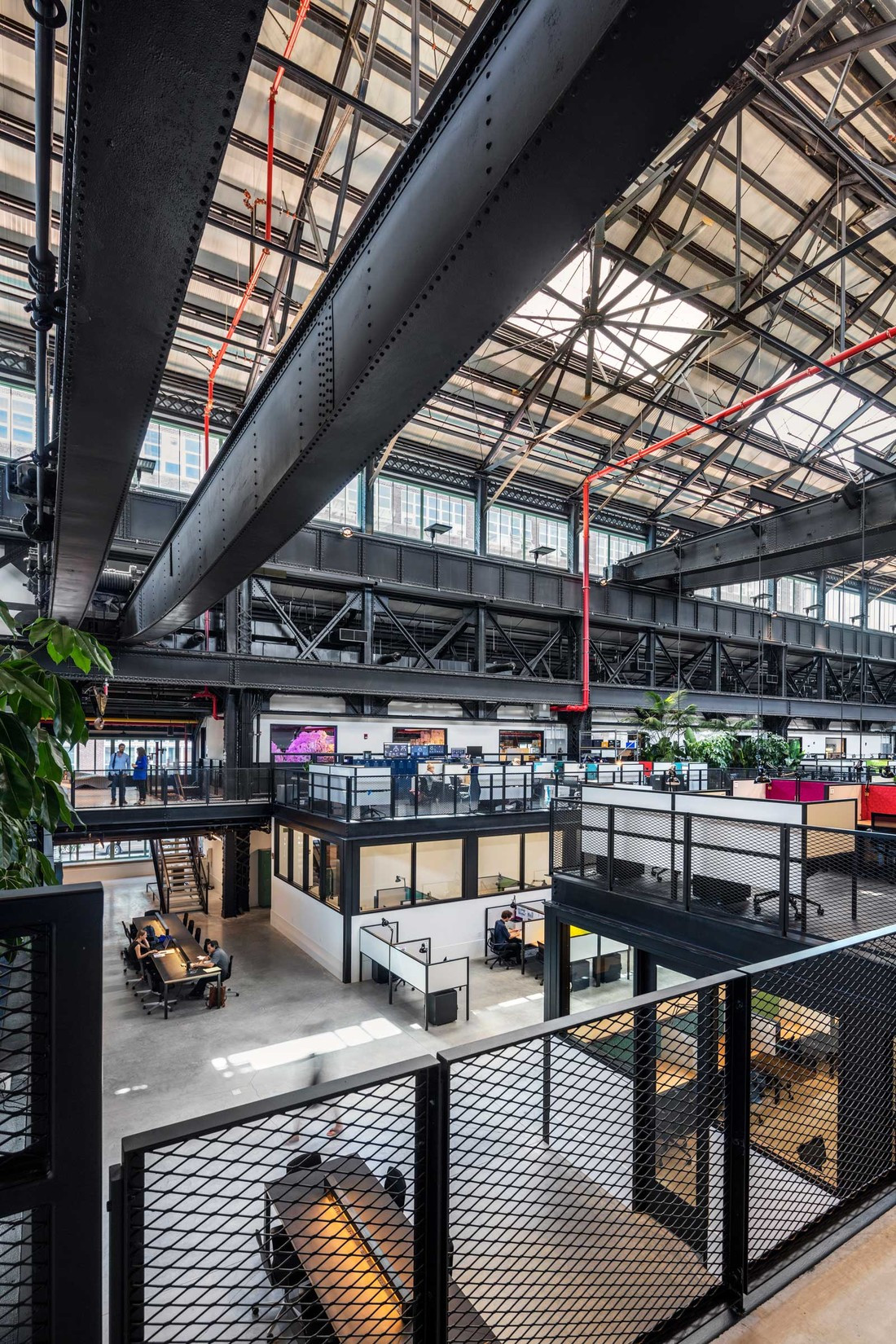
Existing Structures
Existing building trusses and overhead material transport gantries remain clear and unaltered. New distribution systems consolidate behind existing primary beams at side aisles to avoid visual noise at the main ceiling structure. ©David Sundberg/ESTO
- Location
- Brooklyn, New York
- Client
- MacroSea/DBI
- Typology
- Commercial, Preservation & Reuse, Workspace, Institutional, Industrial, Tech
- Size
- 84,000 SF
- Design Team
- Jonathan Marvel, Scott Demel, Zachary Cohen, Elise DeChard, Eckart Graeve, Teo Quintana
- Consultants
- Engineering Group Associates (Structural Engineer) BD Engineering (MEP) Domingo Gonzalez Associates(Lighting Design) Macro Sea (Concept + Interior Design)
- Awards
- AIANY Design Merit Award for Architecture, Building Brooklyn Awards National Grid Award for Energy Efficiency, Architectural Record Good Design is Good Business , AIA New York State Design Award: Historic Preservation/Adaptive Reuse Category, ULI NY Awards for Excellence in Repositioning or Redevelopment
- Photography Credits
- © David Sundberg/ESTO
